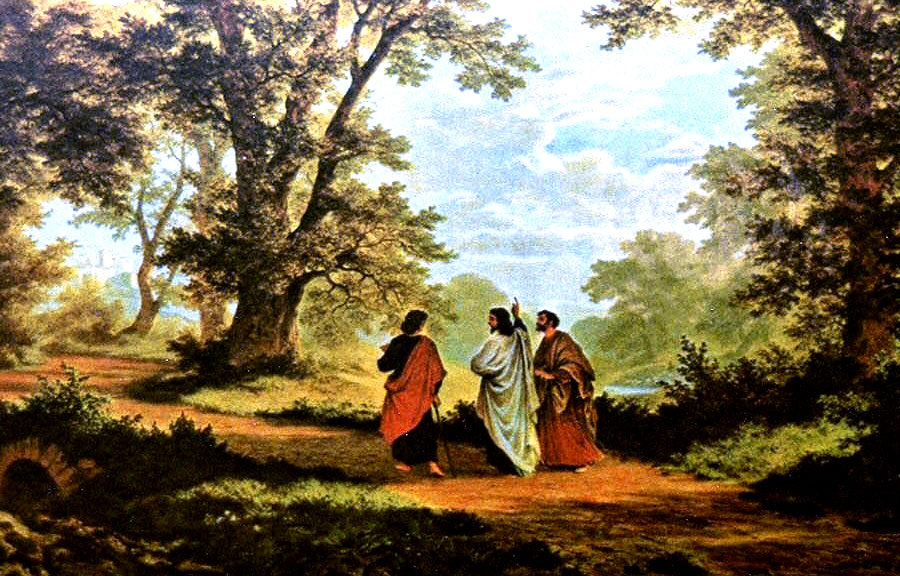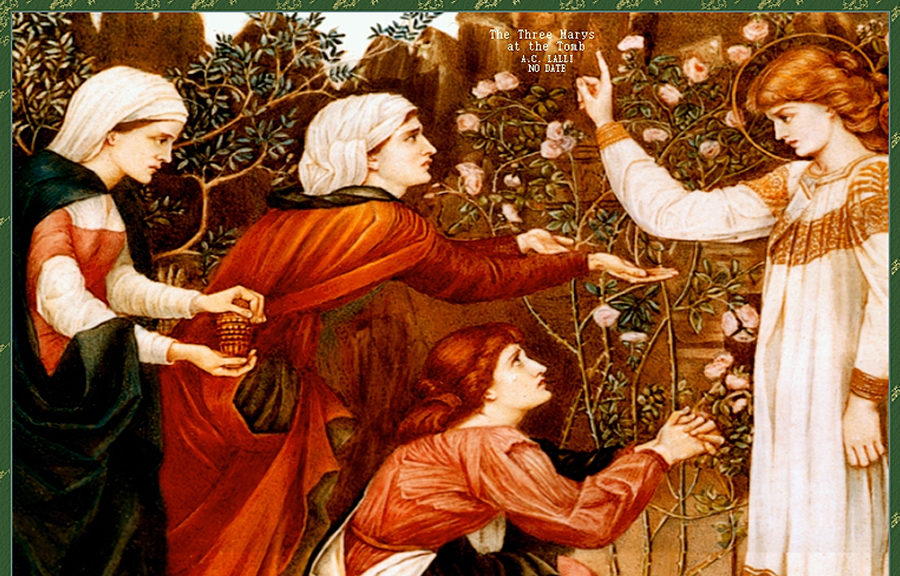Easter 2 & 3A – 23-4-17 B & 30-4-17 A & C – Emmaus Walk – Luke 24.13-49
The Emmaus Walk – it’s a journey which means something different to each of us. For some, it’s an eyewitness account of the risen Jesus. The fact that Jesus eats with the two disciples is a witness to his physical resurrection. Other people respond more to the disciples’ hearts set afire by Jesus’ teaching. It echoes how studying scripture has opened up new life for them.
For many people, though, the Emmaus Road is a journey that all of us travel again and again. From childhood to adolescence to adulthood to parenthood to retirement to dependence – changes often marked by the endings of central relationships. Every stage seems to begin with a mixture of loss and emptiness and fear. But later on, with the blessing, we will always look back with quite a different perspective. Philip Newell captures this in a lovely prayer.
Like an infant’s open-eyed wonder
and the insights of a wise grandmother,
like a young man’s vision for justice
and the vitality that shines in a girl’s face,
like tears that flow in a friend bereaved
and laughter in a lover’s eyes,
you have given me ways of seeing, O God,
you have endowed me with sight like your own.
let these be alive in me this day,
let these be alive in me.
J Philip Newell Sounds of the Eternal
The Emmaus Walk is the journey of farewell to old certainties; the journey through times where hope seems to abandon us. We suddenly journey without direction; we stumble blindly. And then, just when the emptiness threatens to swallow us entirely, we are found. And in being found, we are given a new perspective. Once everything is new and hopeful again after this Emmaus Walk, in hindsight we see that it’s in clear continuity with all we’ve ever been.
The Emmaus story represents the human journey beautifully. Just as we seem to be walking away from all we believed most real – when it feels like hope and truth must be entirely abandoned – we’re given a new way of seeing which is utterly transformative. Suddenly, we are new-made, and amazingly, that newness seems given to us simply by the way we can now see everything.
It may seem strange that a healthy faith can necessarily involve times of walking away, despondent and sad, from cherished certainties. Sometimes, the old, fading truth we are clinging to can seem impossible to let go – far too precious. But unless we can do it, we cannot be reborn. We’ll be like a chrysalis that never becomes a butterfly.
What were Cleopas and his friend talking about so sadly? – the greatest hope of their lives; the redemption of Israel. But it all depended utterly on Jesus living on in the way they’d known him. That hope had been dashed. Anywhere they went now was away; away from that lost joyful hope. But Jesus came to accompany them – gently to teach them again – to prise open those wounded hearts and eyes to reveal a deeper hope; a hope so deep in them that they hardly recognised it. But they could feel it. Talking about it later, they said their hearts had been set on fire by his words.
There was nothing inherently bad about their old hopes and dreams. But they depended on the continuation of Jesus’ earthly life, and so were inadequate to the bigger picture that Jesus’ death and resurrection opened up. Walking sadly away from Jerusalem was part of their journey; the Emmaus Walk was the part of their journey where Jesus would meet them and give them what their hearts needed – and this was so that they could go back and give new heart to the others – and now to us. The Emmaus Walk isn’t just for personal healing; it’s the way God begins the transformation of communities – through you and me.
You’d think spiritual renewal / redemption / revelation might only come to those who are actively seeking it. But what we see here is that it comes looking for those who least expect it – and it comes in a category different altogether from what we’d normally imagine possible.
A funny thing is that the exact location of Emmaus isn’t known. So Emmaus may be anywhere. Hearts burning and eyes opening aren’t confined to just one place, either geographical or spiritual; nor is spirituality confined to one way of doing things. Emmaus comes into sight wherever a path has led us into communion with God; whenever we recognize that the risen Christ has been among us. That’s just like the Holy Spirit; you can never quite catch her, but you can always tell where she’s been.
Three questions for silent meditation, or for discussion.
- Have you had an Emmaus Walk?
- Has Jesus come to travel with you when you least expected him to?
- Did he tell you something that you should run back and tell us?
Footsteps In The Sand
One night I had a dream.
I dreamed I was walking along the beach with the Lord.
Across the sky flashed scenes from my life.
For each scene, I noticed two sets of footprints in the sand:
one belonging to me, and the other to the Lord.
When the last scene of my life flashed before me
I looked back, at the footprints in the sand.
I noticed that many times along the path of my life
there was only one set of footprints.
I also noticed that it happened at the very lowest and saddest times of my life.
This really bothered me and I questioned the Lord about it:
“Lord, you said that once I decided to follow you,
you’d walk with me all the way.
But I have noticed that during the most troublesome times in my life
there’s only one set of footprints.
I don’t understand why, when I needed you most, you would leave me.”
The Lord replied:
“My precious child, I love you and I would never leave you.
During your times of trial and suffering,
when you see only one set of footprints, it was then that I carried you.”
Changed from 3rd person masculine singular to 1st person. Author unknown


